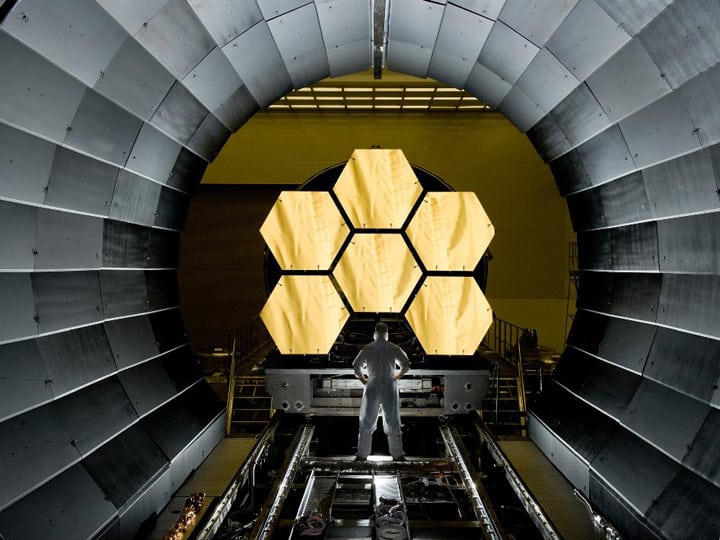Latest News

NASA’s James Webb Space Telescope (JWST). Photo: JWST.
News broke last week that government investigators have confirmed SpaceX was not at fault for the failure of the top-secret Zuma mission in January. Instead, officials are pointing the finger squarely at manufacturer Northrop Grumman, The Wall Street Journal (WSJ) reported. The revelation comes less than two weeks after NASA further delayed the launch of its James Webb Space Telescope (JWST), partly attributing missed deadlines to worker mishaps during Northrop Grumman’s integration process.
These consecutive slip-ups may hint at a larger issue within the company, which for years has enjoyed a stream of plump defense contracts as one of the U.S. government’s go-to partners. Now, there’s no doubt its customers are asking themselves: if Northrop Grumman has been overly lax about quality control, just how severe is the problem? And how does the company intend to rectify it?
When the mysterious Zuma payload failed to arrive in orbit earlier this year, launch provider SpaceX was quick to distance itself from blame. “Falcon 9 did everything correctly,” SpaceX President Gwynne Shotwell stated immediately after the incident. The U.S. Air Force seemed to agree: in late January, Lt. Gen. John Thompson, commander of the Space and Missile Systems Center, told Bloomberg News that SpaceX was not at risk of losing its certification status to launch military missions in the future. As a result, the crosshairs shifted to Northrop Grumman, which built not only the Zuma satellite itself but a customized payload adapter that attached it to Falcon 9.
There remains little public information about Zuma’s purpose, and no government agency has stepped forward to claim ownership. Northrop Grumman has been also unwilling to comment publicly, citing the highly classified nature of the mission. What is known now, though — at least according to WSJ’s anonymous sources — is that the mission’s failure stemmed from a malfunction of the payload adapter.
The adapter, which Northrop Grumman purchased from a subcontractor before modifying and testing it thrice on the ground, failed to detach the payload from the Falcon 9 at the correct time. As a result, the satellite fell back to Earth along with the rocket’s second stage, ultimately crashing down somewhere in the Indian Ocean. The mission was written off as a total loss.
Then, in late March NASA announced yet another delay for its next-gen James Webb Space Telescope (JWST). Originally scheduled to fly into orbit in October this year, NASA was forced to push back JWST’s launch date to June 2019, then again to May 2020 due to ongoing integration issues.
A February Government Accountability Office (GAO) report revealed that Northrop Grumman workers accidentally contaminated the propulsion system’s thruster modules with the incorrect cleaning solvent, causing the component to leak beyond allowable levels. Northrop Grumman also discovered several tears in the spacecraft’s sunshield membrane, which program officials attributed to “workmanship error.”
“Project officials have expressed concern with Northrop Grumman’s ability to prevent further schedule erosion as the project moves through remaining integration and test work,” the GAO report stated. Overall, these technical issues have set the project back an average of two and a half months per year, and have also run its total cost very close to the $8 billion cap set by Congress in 2011.
According to NASA, JWST program officials have increased oversight of Northrop Grumman’s integration and testing efforts due to these slipups. The agency has also established an external review board, chaired by former Lockheed Martin executive Tom Young, to monitor the project’s progress and determine whether it can meet its newly revised launch schedule.
For Northrop Grumman’s own sake, the company has made significant changes to its satellite production procedures, WSJ reported. The revisions include better training and more detailed quality control checks, but will cost the company at least $200 million in extra personnel expenditures.
The broader impact of these cost overruns and delays remains to be seen — NASA will not present the review board’s assessment to Congress until the end of June. But already there is concern about government funding for future NASA observatories. In its full year 2019 budget request, the Trump administration proposed cutting funding for JWST’s successor, the Wide-Field Infrared Survey Telescope (WFIRST), instead hoping to put that money toward human exploration of the Moon and Mars. Unsurprisingly, some Democratic lawmakers have expressed resistance: “The administration’s budget for NASA is a nonstarter,” said U.S. Sen. Bill Nelson.
Northrop Grumman was not willing to comment for this article, stating only that it “remains steadfast in its commitment to NASA and ensuring successful integration, launch and deployment of the James Webb Space Telescope.”
Get the latest Via Satellite news!
Subscribe Now